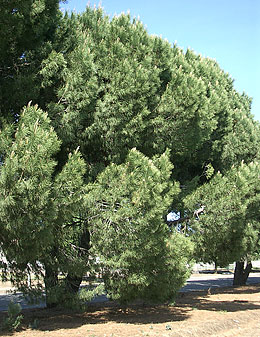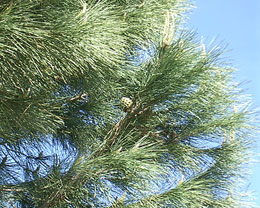Salinity Management Guide

Pinus pinea (Italian stone pine) does well with heat and aridity, once established. It’s also known to be salt-tolerant.
Assessing compatibility with climate
A plant responds to a number of constraints imposed by the local and regional climate and geography, including: intensity and daily duration of sunlight, quantity of rainfall, temperature, prevalence of fog and humidity, and frequency and intensity of physical disturbances, such as wind or flooding.
By considering such climatic and geographic factors in combination, scientists and horticulturists have defined areas often referred to as "landscape regions," "hardiness zones," or simply "climate zones."

Originally grown in southern Europe and Turkey, Pinus pinea grows well in California valleys and on the coast.
By looking at a map of climate zones, you can determine the zone for a particular landscape. You can then select species of plants appropriate for that zone. In doing so, you will have chosen species that are relatively likely to survive and prosper in your landscape, assuming there are no unusual site constraints.
| « Previous page | Next page » |